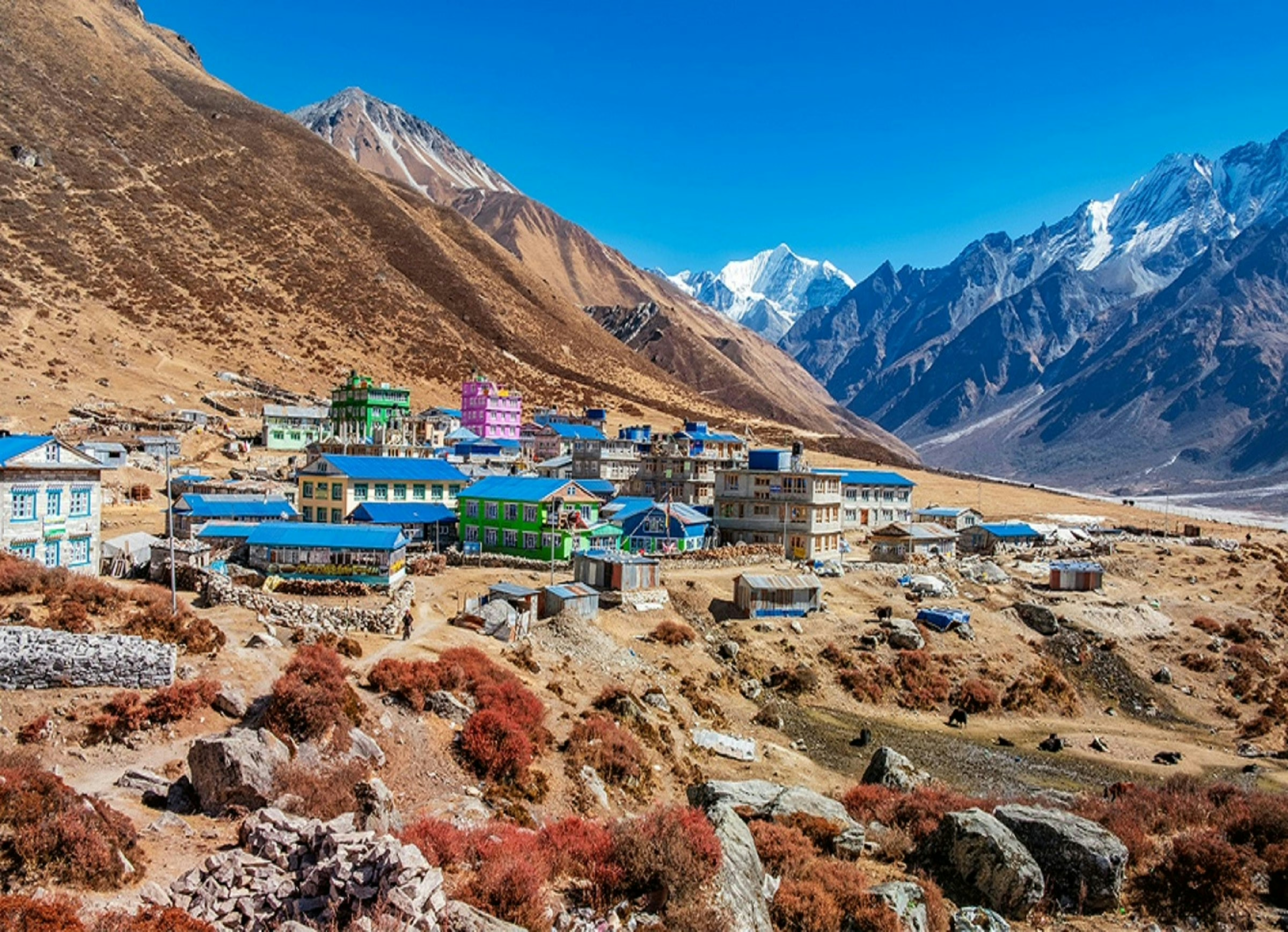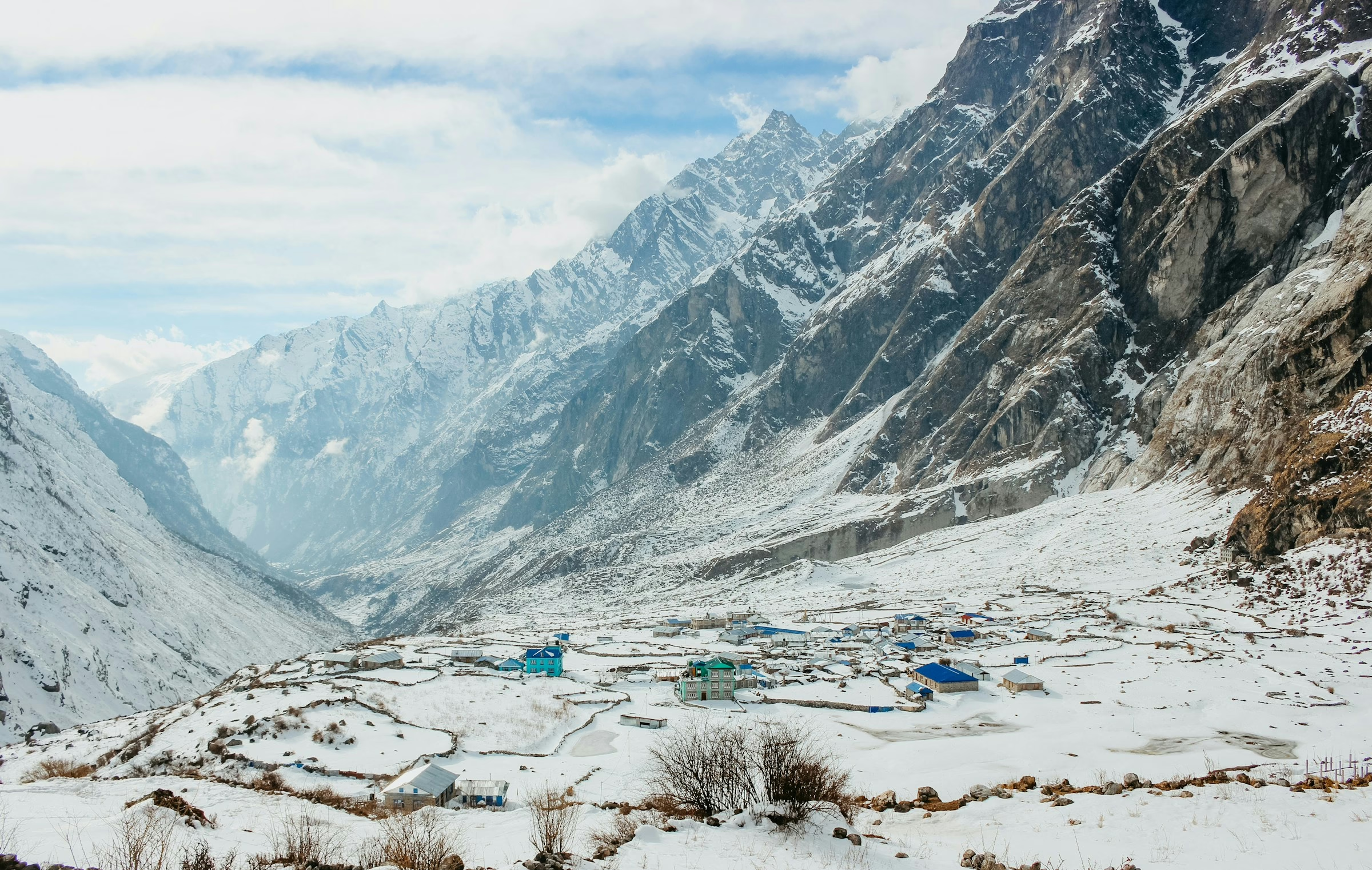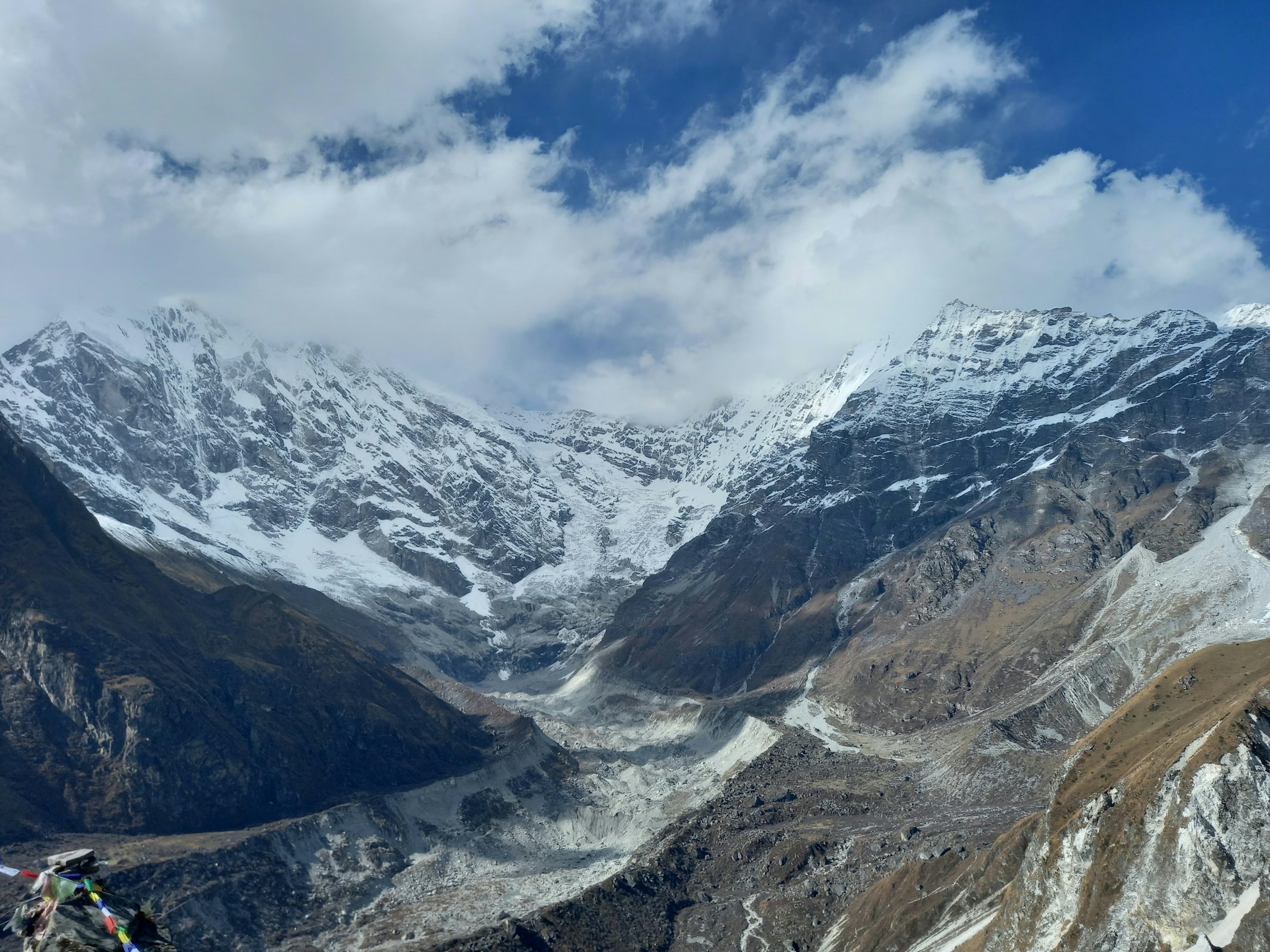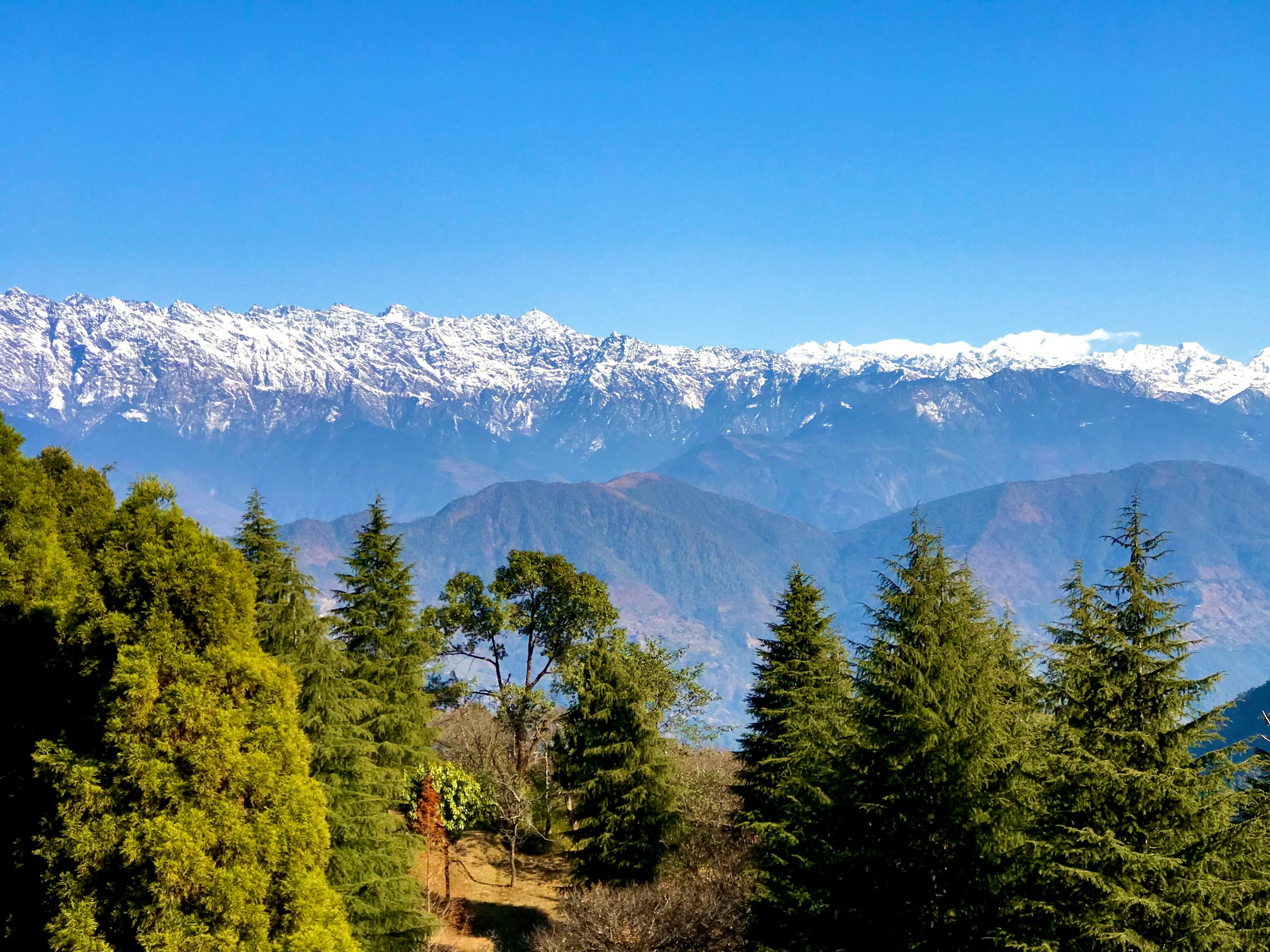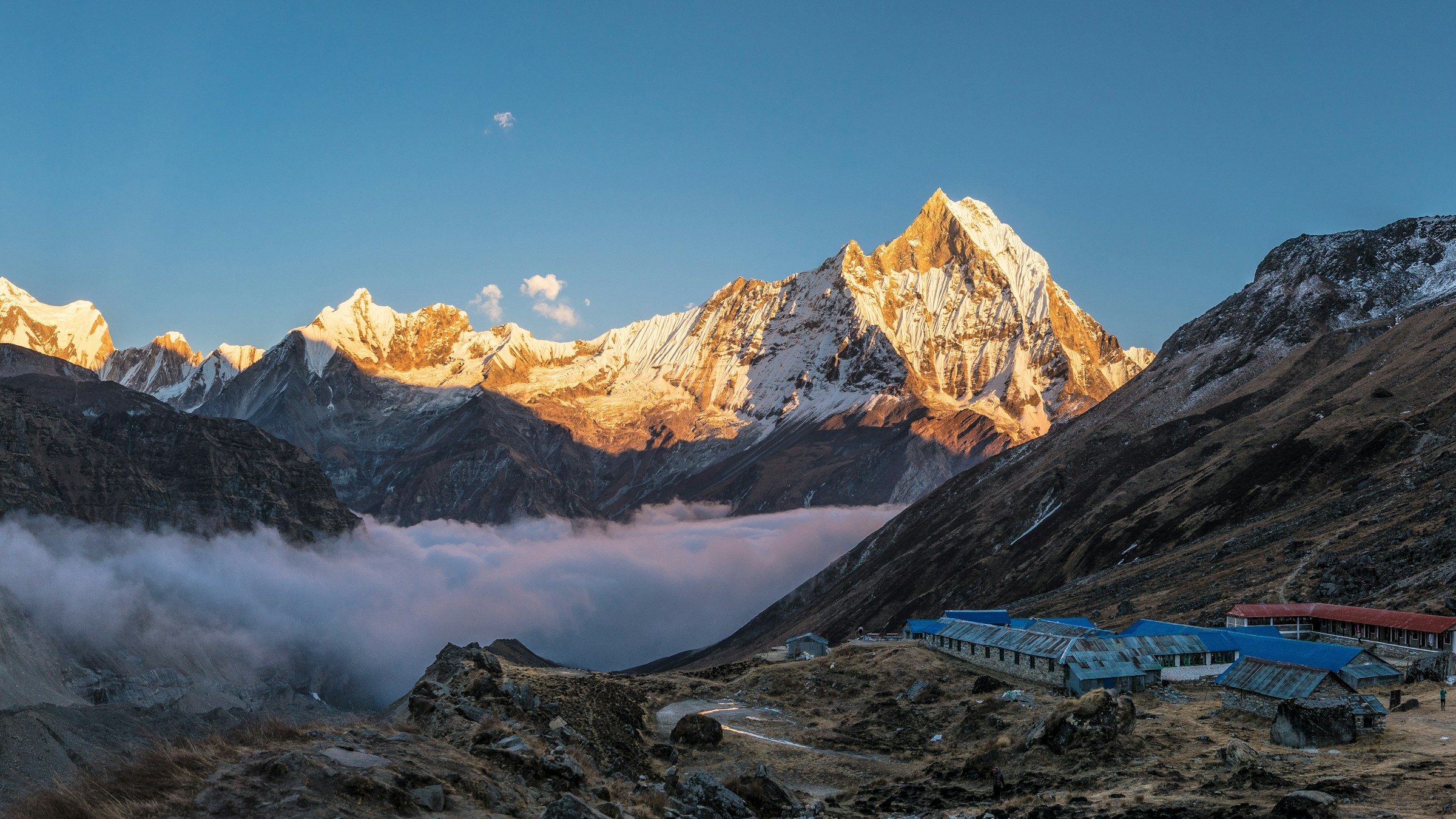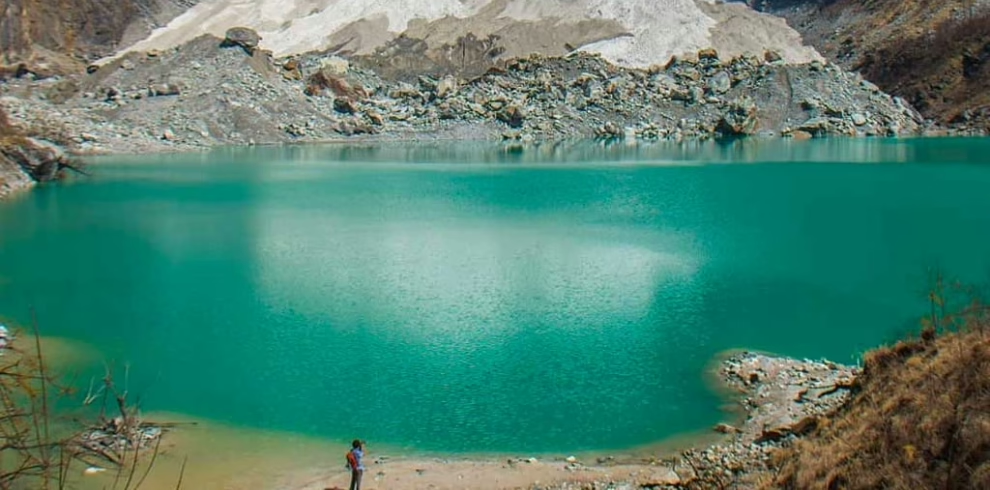If you’re dreaming of a trek that blends breathtaking mountain views, authentic cultural encounters, and manageable adventure, the Langtang Valley Trek is your perfect match. Known as the “Valley of Glaciers,” this stunning route offers a 10-day journey through lush forests, traditional Tamang villages, and high alpine meadows—all just a day’s drive from Kathmandu.
You’ll explore highlights like Kyanjin Gompa, a sacred Buddhist monastery nestled in the mountains, and hike up to Kyanjin Ri for jaw-dropping panoramas of the Langtang range. Whether you’re a first-time trekker or a seasoned hiker, this route is both accessible and customizable, with flexible itineraries available for 2025 and 2026.
Ideal for those seeking both natural beauty and meaningful cultural experiences, the Langtang Valley Trek offers an unforgettable adventure in one of Nepal’s most enchanting regions.
10 days / 9 nights Langtang Valley trip
Discover Hidden Beauty in Langtang Region
Highlights
- Suitable for all skill levels—no prior trekking experience needed for this easy to moderate trek.
- Enjoy panoramic views of snow-capped peaks from Kyanjin Ri and Tserko Ri.
- Visit the famous Yak Cheese Factory in Kyanjin Gompa.
- Experience Tamang culture, closely linked to Tibetan Buddhism.
- Langtang Valley is Nepal’s third most popular trekking destination.
- Trek through scenic forests of rhododendron, pine, maple, and oak.
- View stunning peaks such as Langtang Ri, Langtang, Langsisa, and Ganjala.
- Receive blessings at historic Buddhist sites like Kyanjin Gompa and Langtang Gompa.
Itinerary
Upon your arrival at Tribhuvan International Airport, our representative will greet you and transfer you to your hotel in a private tourist vehicle. Once you're settled at the hotel, we will schedule a trip briefing at the hotel lobby or restaurant.
Your 10-day Langtang Valley Trek begins with a scenic drive from Kathmandu to Syabrubesi. Along the way, you'll enjoy views of rivers, terraced fields, traditional villages, and snow-capped peaks like Annapurna I, Ganesh Himal, and Manaslu. The journey follows the Trishuli River, gradually climbing toward Dhunche before reaching Syabrubesi, where you can stretch your legs and explore the village. Tonight, you’ll stay in a local teahouse.
Teahouses are common along Nepal’s trekking routes, offering simple but hearty meals and a warm bed at the end of each day. You'll experience their hospitality throughout the Langtang Valley Trek.
After breakfast in Syabrubesi, you’ll begin your trek along the Langtang Valley trail, starting at the Bhote Koshi River, which flows from Tibet. Your first stop will be Guru Rinpoche Gomba, where you can offer prayers for your journey. From there, follow the stone-paved path along the Langtang Khola, crossing a suspension bridge before gradually ascending to Bamboo. This scenic spot, nestled in a canyon, has several guesthouses near the river.
The trail continues through a subtropical forest filled with oak, maple, fir, rhododendron, blue pine, and tall spruce trees. You may also spot wildlife like yellow-throated martens, red pandas, langurs, and Himalayan black bears. After a steady climb, you’ll reach Lama Hotel, a popular resting place surrounded by forests and offering several good hotels near the river.
Today’s trek from Lama Hotel to Langtang Village will be an exciting adventure. After breakfast, you’ll begin with a gradual climb that becomes steeper as you go. Along the way, you’ll walk through oak, maple, rhododendron, and hemlock forests, following the Langtang Khola. As you ascend, the snow-capped peaks, especially Mt. Langtang, will come into view.
Continuing on the trail, you’ll pass the Ghodatabela meadow and cross a wooden bridge. You’ll trek through yak pastures, pass a helipad, and ascend through rhododendron forests before reaching the Tamang settlement. This picturesque village features Tibetan-style homes with carved wooden windows, surrounded by fields of turnips, potatoes, and barley, all enclosed by stone walls.
After breakfast in Langtang Village, you’ll continue your 10-day Langtang Valley trek. It will take a few hours to reach Kyanjin Gompa. The trail begins by winding around the Mani Walls, then ascends to a ridge capped with a large chorten. After a moderate climb, you’ll cross a brook and pass lovely prayer flags on your way to Mundu. From there, you’ll walk through moraines and cross several small streams via wooden bridges.
As you approach Kyanjin Gompa, you’ll be rewarded with views of glaciers flowing from Kimshug and Langtang Lirung. Once in Kyanjin Gompa, you can visit the famous monastery and enjoy panoramic views of Dorje Lhakpa, Langshisha Ri, Ganja La, Tsergo Ri, and other nearby peaks.
On the sixth day of the Langtang Valley Trek, you can explore the stunning vistas around Kyanjin Gompa. Start with a visit to the renowned Kyanjin Gompa for morning prayers before embarking on a hike to Tsergo Ri (4984 m), the highest point of the trek. This short but rewarding hike offers breathtaking views of snow-capped peaks, including the Langtang range, Kinshung, Yansa Tsenji, and others.
Alternatively, you can hike to Kyanjin Ri (4773 m), a shorter and easier climb than Tsergo Ri, but still challenging. From either summit, you’ll enjoy panoramic views of snow-covered mountains, open valleys, and frozen lakes. Afterward, return to your guesthouse in Kyanjin Gompa for the night.
After an enjoyable stay at Kyanjin Gompa, it's time to bid farewell to the Buddhist community. Today’s walk will be longer than previous days. After breakfast, take in the views of snow-capped peaks before starting your trek. You'll retrace your steps along the Langtang Khola, passing through yak herding communities and alpine pastures until you reach Langtang village.
Continue toward Ghodatabela, then descend to the Lama Hotel. Check in at the best teahouse in the area, where you can relax and enjoy the scenic views of rhododendrons and pines swaying in the mountain breeze.
Your Langtang Valley Trek is nearing its end. After a hearty breakfast, you'll begin your return journey to Syabrubesi. Most of the route is downhill, taking you through scenic forests and offering stunning views of lush hills and mountains. Along the way, you’ll pass traditional villages where you can observe local customs and culture. After several hours of hiking, you'll reach Syabrubesi. Relax and enjoy your final night, perhaps visiting the natural hot spring to unwind.
Your Langtang Valley Trek concludes today with a bus ride from Syabrubesi to Kathmandu. After an early breakfast, you'll journey through terraced fields, rural villages, rivers, and hills, following the Trishuli River with lush greenery along the way. After a full day of travel, you'll arrive in Kathmandu late in the evening, ready to unwind. You can relax in your room or take some time to explore the vibrant Thamel area. This is also a great opportunity to visit Kathmandu's historical and cultural sites.
On the final day of your Langtang Valley Trek, one of our staff members will escort you to the airport for your departure. If you'd like to extend your trip, Green Lotus Trekking can assist with arrangements. For late evening flights, you can also shop for souvenirs. We wish you the best in your future travels and hope you enjoyed your time with us. Farewell!
Includes/Excludes
Cost Includes
- International airport pickup upon arrival
- 2 nights’ accommodation in a 3-star hotel in Thamel, Kathmandu (bed and breakfast)
- Public bus ticket from Kathmandu to Syabrubesi
- 7 nights’ tea house accommodation during the trek (twin-sharing basis)
- All meals during the trek (breakfast, lunch, and dinner)
- Professional English-speaking trekking guide (includes guide’s salary, meals, accommodation, transport, and equipment)
- Sleeping bag and duffle bag (on request)
- All required permits for the Langtang Trek
- Government taxes and service charges
- Langtang Valley Trek map
- Farewell dinner in Kathmandu before departure
- Free luggage storage at Green Lotus Trekking during the trek
- Purified drinking water (Ef-Chlor tablets)
- Airport drop-off on final departure
Cost Excludes
- International airfare, Nepal visa fee, and travel insurance
- Extra nights in Kathmandu, plus lunch and dinner not included in the itinerary
- Private Jeep (USD 150 one-way; recommended over public bus due to rough roads)
- Personal expenses: drinks, hot showers, battery charging, Wi-Fi/data, laundry, extra meals, etc.
- Costs due to unforeseen events (e.g. roadblocks, delays)
- Tips for the trekking guide (customary after completing the trek)
FAQs
Yes, you’ll need two permits: the Langtang National Park Entry Permit and the TIMS (Trekkers’ Information Management System) card.
Yes, beginners with reasonable physical and mental fitness can complete the trek. You’ll be guided by a professional, experienced trekking guide who will support you throughout the journey.
The Langtang Trek is considered moderately challenging. It’s tougher than easy hikes but not as strenuous as advanced treks. The difficulty can be adjusted based on your pace and itinerary.
ATMs and credit card facilities are available in Kathmandu. Beyond that, cash is required for all services along the trekking route.
Yes, electricity is available at all teahouses, often for a small fee to charge devices.
Wi-Fi is available in some teahouses but is often slow and unreliable. We do not recommend bringing laptops.
Yes, since the trek exceeds 3,000 meters, there is a risk of altitude sickness due to lower oxygen and pressure at higher elevations.
Tips to reduce your risk:
- Ascend slowly with proper acclimatization
- Stay well-hydrated
- Eat a nutritious diet
- Avoid alcohol, tobacco, and smoking
- Be mentally and physically prepared
Yes. You can:
- Buy bottled mineral water (cost increases with altitude)
- Use reusable bottles with purification tablets or filters
- Refill at teahouses or streams (boiled water is safest)
You can leave unnecessary belongings at your hotel in Kathmandu or our office—both offer free storage during your trek.
The highest point is Tsergo Ri, which stands at 4,985 meters (16,355 feet) above sea level.
The Langtang Valley Trek is one of Nepal’s most accessible and visually stunning trekking experiences, located just a few hours from Kathmandu. This 10-day adventure offers panoramic views of snow-capped peaks, glaciers, and lush hillsides, while immersing trekkers in the rich culture of the Tamang people and the diverse ecosystems of Langtang National Park.
Renowned for its natural beauty, cultural depth, and moderate difficulty, the Langtang Valley Trek is ideal for both novice and seasoned hikers seeking a rewarding Himalayan journey. Along the way, you’ll encounter welcoming locals, vibrant landscapes, and a mix of subtropical to alpine environments. The park is home to rhododendron, pine, oak, and maple forests, as well as rare wildlife like the red panda, Himalayan black bear, and Himalayan thar.
The trek begins with a 7–8 hour drive from Kathmandu to the village of Syabrubesi. From there, you’ll follow the Langtang River, crossing scenic suspension bridges and passing waterfalls en route to the Lama Hotel. Continuing through dense forests, you’ll reach Langtang Village and eventually Kyanjin Gompa, where you’ll explore yak pastures and enjoy a day hike to Kyanjin Ri for breathtaking 360-degree views of the Himalayas.
Afterward, you’ll retrace your steps back to Syabrubesi via Ghodatabela, concluding your journey with a return drive to Kathmandu.
Following the 2015 earthquake, Langtang has seen a steady revival, with most tea houses rebuilt and new ones under construction—making it a safe and comfortable trekking destination once again.
At Green Lotus Trekking Pvt. Ltd, we’re proud to offer a thoughtfully crafted Langtang Valley Trek itinerary for 2025 and 2026. The package is fully customizable based on your time, budget, and fitness level. For questions about pricing or itinerary adjustments, feel free to contact us.
Benefits of Booking the Langtang Valley Trek with Us
- Complimentary airport pickup and drop-off
- Langtang Valley Trek map included
- Oximeter provided to monitor blood oxygen levels
- Medical kit available for emergencies
- Free luggage storage at our office during the trek
- Sleeping bags provided upon request
What to Expect from the Langtang Valley Trek Package?
Langtang Valley, often called the “Valley of Glaciers,” is home to glaciers such as Yala, Lirung, and Khimsung, many of which are visible near overnight stops.
The trek leads to Kyanjin Gompa, a vibrant Tamang village and spiritual hub. From here, a short hike to Kyanjin Ri (4,773m) offers panoramic views of the Langtang range, including peaks like Langtang Lirung (7,246m), Kimshung (6,781m), and Langshisha Ri (6,370m).
You’ll trek through Langtang National Park, rich in biodiversity and scenic beauty. Forests of oak, cedar, maple, and blooming rhododendrons provide a colorful backdrop, while the park is home to wildlife such as red pandas, Himalayan black bears, snow leopards, Himalayan thars, and rhesus monkeys.
Along the way, you’ll enjoy views of towering peaks like Yala Peak, Gang Chhenpo (6,388m), Yansa Tsenji (6,575m), Naya Kanga (5,846m), Dorje Lakpa (6,966m), and more.
The region is primarily inhabited by the Tamang people, who practice Tibetan Buddhism. You’ll see prayer flags, mani walls, and have a chance to taste locally made yak cheese, which is often included in meals. The cultural richness adds a rewarding layer to the trek.
The journey also follows rivers like the Langtang Khola and Bhote Koshi, with numerous scenic waterfalls and suspension bridges enhancing the experience.
Teahouse accommodations are simple but comfortable. Most overnight stops, except the Lama Hotel, offer private bathrooms. With fewer crowds, room availability is generally not an issue.
Is the Langtang Valley Trek Right for You?
The Langtang Valley Trek is ideal for beginner trekkers looking for a scenic and culturally rich Himalayan experience. It offers stunning views, unique wildlife, and authentic Tamang culture, all within a relatively short timeframe.
You’ll see traditional Tamang homes, visit ancient monasteries, and even spot Tibetan peaks near Kyanjin Gompa. If you’re interested in close encounters with red pandas, langurs, and other rare Himalayan species, this trek is a great fit.
Preparation Tips for the Langtang Valley Trek
Though considered moderate, the trek involves ascending to 4,773m at Kyanjin Ri, which requires good preparation. Trekking with a guide is recommended, especially for first-timers, to ensure safety and help with permits and logistics.
Acclimatization is essential, as altitude sickness can affect anyone. Avoid alcohol and caffeine, which can increase susceptibility.
To prepare, focus on aerobic and strength endurance training. Recommended exercises include:
- Aerobic workouts: swimming, jogging, cycling, brisk walking
- Strength and balance exercises: jump squats, step-ups, hip rolls, hip clocks
These routines improve oxygen efficiency, leg and core strength, and balance—all vital for navigating uneven terrain and carrying your gear.
For best results, start training in advance and consider short practice hikes before your departure to Nepal.
Useful Information on Langtang Valley Trek
Best Time to Do the Langtang Valley Trek
- Spring (March–May)
Spring is the second-best season for the Langtang Valley Trek. Forests in Langtang National Park burst with colorful rhododendron blooms in pink, red, and yellow. The trails are fragrant with pine and maple. Wildlife is active after winter, and with luck, you might spot a red panda. Weather is generally stable—cool, warm, and dry.
- Autumn (September–November)
Autumn is the best season for trekking, offering mild temperatures and clear skies. Trails are dry and in good condition, with fewer leeches and mosquitoes. Enjoy stunning mountain views of Langtang Lirung, Ganesh, Himalchuli, and Dorje Lakpa beneath vibrant blue skies.
Meals on the Langtang Valley Trek
You’ll enjoy traditional Nepali dishes like dal bhat, as well as a variety of Chinese, Indian, and Western meals.
Breakfast options include Tibetan bread with jam, French toast, porridge, oatmeal, muesli, hash browns, fried eggs, pancakes, and chapatti with tea.
Lunch and dinner options feature dal bhat, momos (dumplings), fried rice, noodles, stews, soup, thukpa, pizza, pasta, spring rolls, and macaroni.
Accommodation During the Trek
Teahouses are available throughout the trek. In Syabrubesi, you’ll find a few higher-end hotels. From Lama Hotel to Kyanjin Gompa, accommodations are more basic but comfortable, usually twin-sharing rooms with beds, blankets, pillows, and small desks. Some offer private bathrooms; others have shared Asian or Western-style restrooms. Hot showers are solar-powered and may require an extra fee.
Travel Insurance for Langtang Valley Trek
Due to the remote, high-altitude terrain, comprehensive travel insurance is strongly recommended. Your policy should cover:
- Emergency helicopter evacuation
- Medical expenses
- Altitude coverage up to 5,500 meters
Insurance ensures peace of mind in case of landslides, illness, or injury on the trail.
Altitude Sickness and Prevention
Altitude sickness can occur above 3,000 meters. Common symptoms include headaches, fatigue, dizziness, nausea, and loss of appetite.
Prevention tips:
- Walk slowly and stay hydrated
- Avoid alcohol and smoking
- Eat high-calorie, nutritious meals
- Acclimatize properly—descend if symptoms worsen
- Bring ginger, garlic, and other natural remedies
Trek Difficulty
Langtang Valley Trek is moderately difficult, primarily due to altitude gain. You’ll ascend over 2,000 meters in the first two days and reach over 4,700 meters at Kyanjin Ri.
Daily hikes last 6–7 hours with some steep climbs. Altitude sickness is a risk, and proper acclimatization is key. While suitable for beginners in good physical shape, it should not be underestimated.
Tips:
- Drink plenty of water
- Eat warm, energy-rich foods
- Maintain a steady pace
Packing List: Gear & Essentials
Avoid overpacking, especially without a porter. Essentials include:
Clothing:
- Hiking pants and shorts
- Lightweight trekking shirts
- Waterproof jacket and raincoat
- Gloves, sunhat, neck gaiter
Footwear & Accessories:
- Hiking boots, sandals
- Sunglasses, trekking bag
Personal Items:
- Sleeping bag, towel, toiletries
- Sunscreen, hand sanitizer
- Water bottle, water purifier
Booking Procedure
Green Lotus Trekking is a government-licensed operator with over 10 years of experience. We’re members of TAAN and NMA.
To book:
- Pay a 10% deposit
- Email passport copy, passport-size photo, travel insurance, and flight details within one week of booking
Payment options:
- Online: Bank transfer or Western Union
- In Nepal: Cash, bank transfer, or credit card
We’ll send payment instructions and final amount details via email for your convenience.

